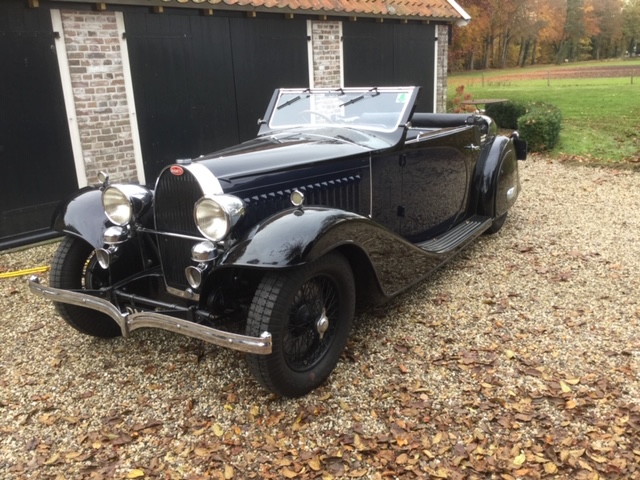1938 Bugatti 57 Stelvio Cabriolet

The descriptions of the Classic Cars in the Directory were partly generated or supplemented with the help of artificial intelligence (AI). The content may occasionally not always be entirely accurate or factually correct despite careful checking.
The Bugatti 57 Stelvio Cabriolet 1938 is an exquisite vehicle that boasts of a number of exceptional technical features. With a design that was ahead of its time, this car is a testament to the superb engineering and craftsmanship that Bugatti was renowned for.
The Bugatti 57 Stelvio Cabriolet was first introduced in 1935 at the Paris Auto Show. It was designed by Jean Bugatti, the son of the company's founder, Ettore Bugatti. The 57 was the first Bugatti to feature a twin-cam engine, and it would remain the company's flagship model until the end of production in 1940. The engine was a 3.3-liter inline-eight that was mated to a four-speed manual transmission.
The Stelvio Cabriolet was a convertible version of the 57 and featured a fully retractable soft top. Its design was inspired by the Stelvio Pass in the Italian Alps, which was known for its hairpin turns and steep gradients. The body of the Stelvio Cabriolet was made entirely out of aluminum, which made it extremely lightweight and maneuverable.
The Bugatti 57 Stelvio Cabriolet had a top speed of 115 miles per hour, which was quite impressive for its time. It could accelerate from 0 to 60 miles per hour in just 11 seconds, which was also impressive for a car of its era. The car's suspension system featured semi-elliptical leaf springs and hydraulic shock absorbers, which made for a smooth and comfortable ride.
One of the most impressive technical features of the Bugatti 57 Stelvio Cabriolet was its braking system. It featured hydraulic drum brakes on all four wheels, which provided exceptional stopping power. The brakes were activated by a pedal-operated hydraulic system, which was a significant improvement over the cable-operated brakes that were commonly used at the time.
The Bugatti 57 Stelvio Cabriolet was also notable for its aerodynamic design. The car's body was styled to minimize drag, which made it more efficient and faster. The Stelvio Cabriolet's radiator was mounted at an angle to the front of the car, which also helped to reduce drag.
In conclusion, the Bugatti 57 Stelvio Cabriolet 1938 is a magnificent vehicle with exceptional technical features. Its combination of lightweight construction, powerful engine, smooth suspension, and top-notch braking system make it a true masterpiece of automotive engineering. With only a few dozen examples of the Stelvio Cabriolet ever produced, this car is a rare and highly sought-after collectors' item.
Milestones
- Production of the Bugatti 57 Stelvio Cabriolet began in 1936 - The 57 Stelvio Cabriolet was one of the last models created by Bugatti under the supervision of founder Ettore Bugatti - The car featured a specially designed oval grille and a sleek, aerodynamic body - The engine was a 3.3-liter, straight-eight motor that produced 135 horsepower - The car could reach a top speed of 105 mph and could go from 0 to 60 mph in around 10 seconds - The 57 Stelvio Cabriolet was produced in limited numbers, with only around ten known to exist today - The car was sold to a number of wealthy collectors and car enthusiasts, including well-known Bugatti collector and enthusiast Dr. Peter Williamson - The 57 Stelvio Cabriolet was featured in numerous classic car exhibitions and shows, including the Pebble Beach Concours d'Elegance and the Amelia Island Concours d'Elegance, where it won numerous awards and accolades.Technical
- Engine type: 3.3-liter inline-eight - Horsepower: 135 hp - Top speed: 105 mph - Transmission: Four-speed manual - Suspension: Front and rear semi-elliptic leaf springs - Brakes: Four-wheel hydraulic drum brakes - Body style: Cabriolet - Wheelbase: 130 inches - Length: 195 inches - Width: 70 inches - Weight: 2,755 pounds - Production: Only 4 produced - Price: Approximately $16,000 in 1938 (equivalent to over $290,000 today)